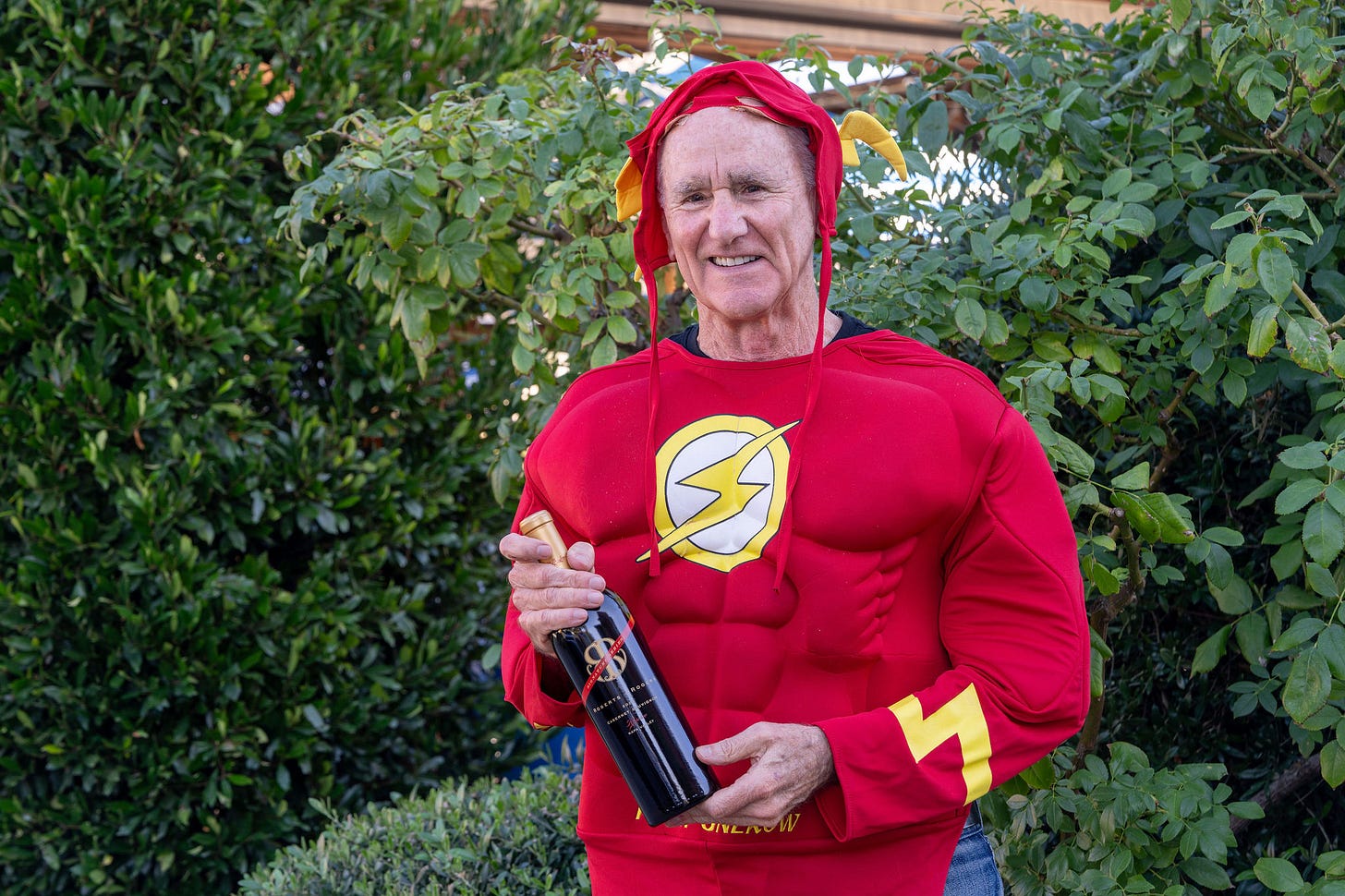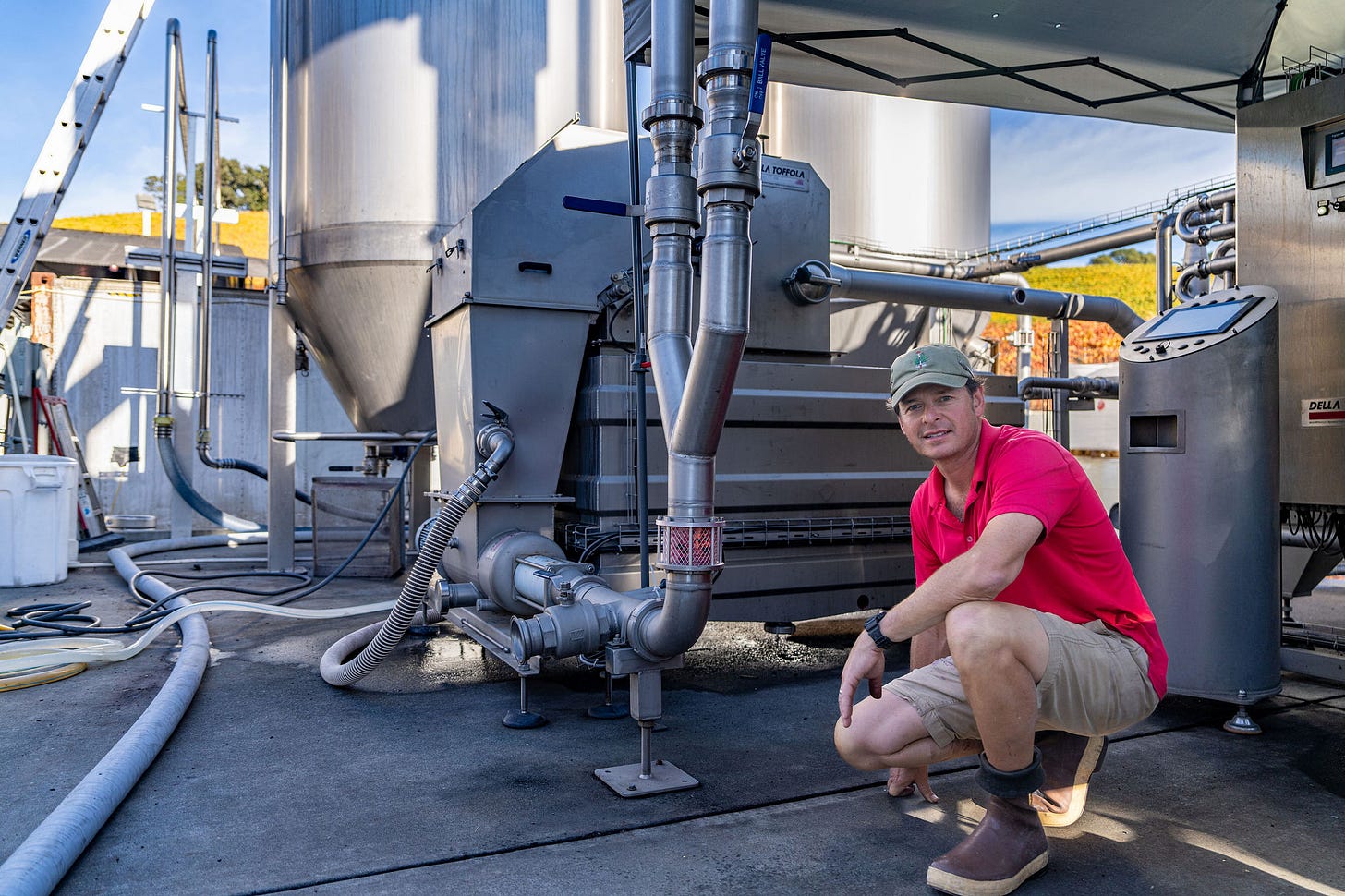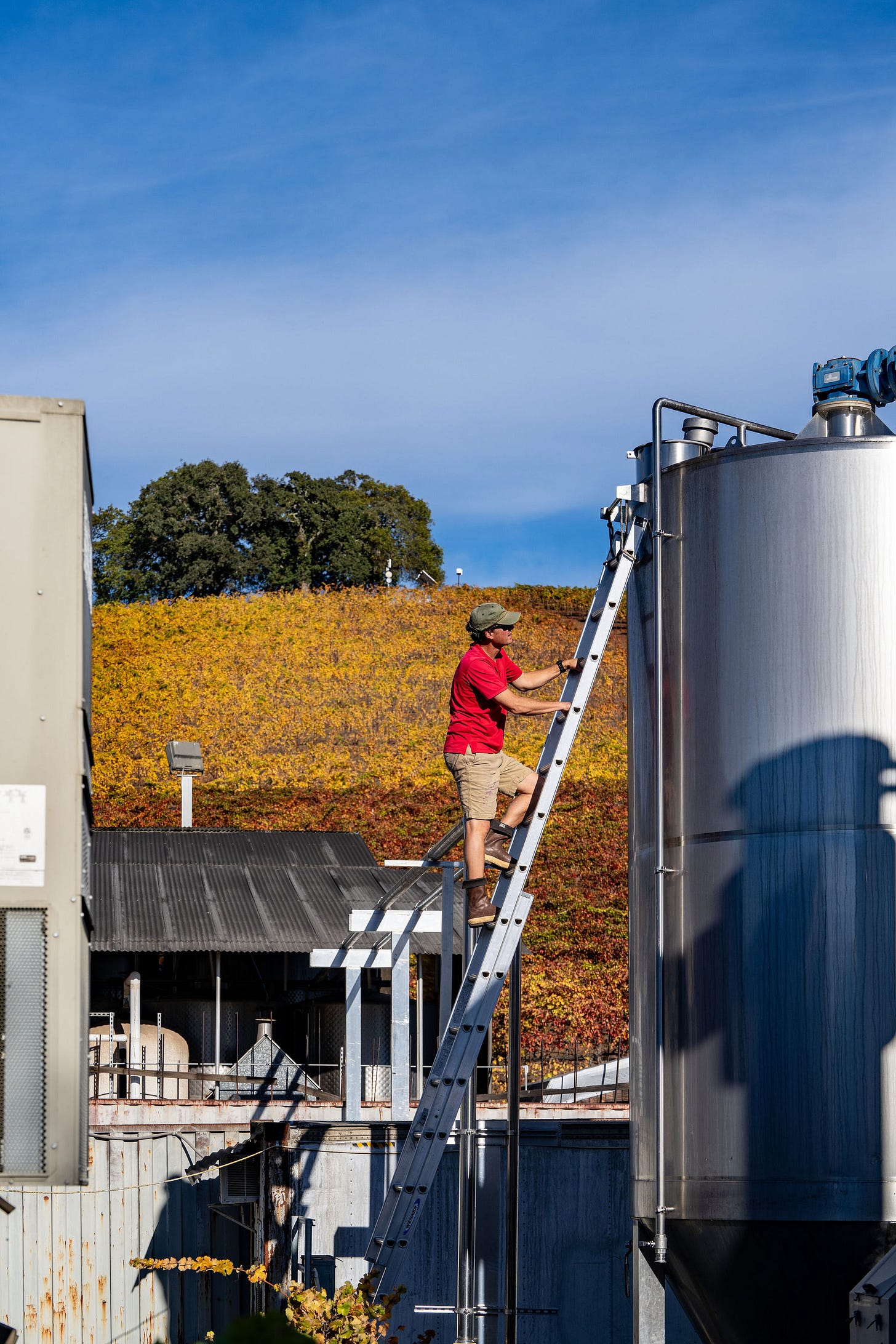NAPA VALLEY, Calif. — Winemaking is a blend of art and science that often merges time-honored practices with modern techniques. The artistry of winemaking is continually tested by agriculture's inherent unpredictability, with each vintage presenting its own set of climatic and logistical challenges.

Technologies such as flash détente have emerged as useful tools in this environment. The technique, which rapidly heats and cools grapes, extracts color and sweetness while minimizing unwanted compounds, including those that impart vegetal, smoky or moldy aromatics.
Early adopters
Barry Gnekow, a seasoned winemaker with roots going back to the 1970s at J. Lohr winery on the Central Coast, played a pivotal role in bringing flash détente to California's wine industry. Facing the challenge of “Monterey veggies” — a term for the vegetal flavors found in wines from cooler, underripe regions — he turned to flash détente, a technique that had been developed in Europe in the 1990s. Gnekow first implemented flash détente in 2009 after learning about it from Rick Jones, a North Coast wine consultant and one of its earliest local proponents. Collaborating with Nicky Hahn of Hahn Estate, he introduced the process at Monterey Wine Co. They even used it on Cinsaut grapes from Lodi’s famous Bechthold Vineyard to intensify the color of the stubbornly light-colored grapes. Gnekow quickly discovered that the technology was also exceptionally effective with varietals like Zinfandel, known for their uneven ripeness.
The use of flash détente expanded to Lodi, where wineries embraced it for its ability to enhance flavors and streamline production. By quickly processing red grape juice after flash détente, wineries could not only improve color and remove unwanted aromatics but also speed up the process by eliminating the need for lengthy traditional skin maceration, moving the flashed juice directly to barrel for fermentation and aging.

Ultimately, in 2012 Napa Valley winemaker Rudy Zuidema would also adopt the flash détente technique, expanding its use in the region. Zuidema, a well-regarded winemaker currently at Shadybrook Estate in Napa Valley, began his winemaking journey after graduating from UC Davis, landing in the Napa Valley in 1991. Zuidema's expertise extends to organic and biodynamic farming, reflecting a deep commitment to sustainable viticulture. He also offers his winemaking skills to various clients and runs his own label, Zuidema Wine Co. His global perspective was enriched by a stint in Australia’s McLaren Vale in 1993. Zuidema's extensive career includes roles at such notable wineries as St. Clement Vineyards, Cuvaison, Honig Vineyard, Ehlers Estate, Robert Craig and White Cottage Ranch, showcasing his versatility and depth of experience in the winemaking field.
After being introduced to flash détente by Gnekow and recognizing its potential, Zuidema identified it as a valuable and, at the time, untapped North Coast business opportunity. He envisioned a service that could ease the challenges winemakers — including himself — face, particularly during difficult vintages. Together with his wife, Amy, Zuidema developed a rough business plan and secured $1.1 million from investors. They acquired the necessary equipment and formed a partnership with a winery that provided the needed space and resources.
“I am a firm believer in the benefits of organic and biodynamic farming,” he said. “Flash detente provides another winemaking tool to help winemakers make the best wine possible, even when thrown curveballs. It’s about heating and cooling the wine fast, not adding chemicals or additives.”
Flash wine technologies
Established in 2012 by the Zuidemas, Flash Wine Technologies emerged as one of the pioneering providers of flash détente services in Northern California. Based at Kunde Family Winery in Sonoma, the company has played a crucial role in addressing the challenges of grape ripeness variability, aiding winemakers in maintaining the consistency of their yearly harvests.
“The process provides options for winemakers in trouble but is also just an added yearly tool that can provide some options while blending,” Zuidema said. “But there are other use-case scenarios, too.”

Zuidema initially adopted flash détente to combat unwanted flavors and enhance grape color extraction, but after the 2017 Tubbs Fire and then the 2020 Glass Fire he and the other users of the technique quickly realized its potential role in mitigating the impact of smoke taint.
During wildfires, smoke's volatile chemicals (phenols) stick to grape skins, eventually being absorbed. During the winemaking process, these phenols bond with grape sugars, creating unpleasant collections of phenolic diglycosides that cause offending aromatics. One of the biggest challenges in dealing with smoke taint during winemaking is that these offending chemicals can hide from sensory detection, remaining dormant until fermentation, aging or even when enzymes in saliva break the chemical bonds and release the previously trapped ashtray-like flavors.
“The results treating smoke taint can be pretty amazing,” Gnekow said. “We made a wine from grapes that had been tested and rejected by a winery, but we processed them using flash and the result was making a wine that won double gold in the S.F. tasting.”
Gnekow was referring to the Roberts and Rogers Napa Valley 2020 Cabernet Sauvignon — a $60+ bottle of wine — that won Double Gold in the “Signature Series” in the most recent San Francisco Wine Competition.
The process is not without its limits and tradeoffs, however. Gnekow explained that there are levels of smoke taint that are unfixable, while Zuidema highlighted that the impact of high heat can remove most — if not all — characteristics imparted to the grapes from where they were grown.
"The process sterilizes the wine, which has many benefits, but it also can impact the terroir element of wine,” he said. “Rutherford bench cabernet goes in, but only cabernet comes out.”
Flash Wine Technologies has expanded its services to accommodate a wide range of clients, from major wineries to smaller establishments. According to Zuidema, these smaller vineyards often join forces, sharing resources to meet the 8-ton minimum for collective processing. The typical cost for this service is about $700 per ton. By combining their harvests, these smaller wineries can each produce several barrels, which they then blend to refine their final wines.
Emergency procedure evolving into a standard winemaking tool
Once primarily viewed solely as an emergency response in winemaking, flash détente is evolving into a standard industry tool. This method, which addresses various challenges — from light color or off flavors to the need for improved winery logistics — is becoming a useful tool in modern oenology.
"The process not only aids winemakers in challenging times but also serves as a valuable addition for annual blending," Zuidema said.

An additional advantage of utilizing Flash Wine Technologies lies in the extensive winemaking and vineyard management experience that Rudy Zuidema brings to the table. This consultative aspect, coupled with the fact that he and his wife personally manage and operate the business, offers clients a unique blend of expertise and dedicated service.
"It's really helped local winemakers navigate some tough years," Gnekow said. "Rudy has provided an essential tool for North Coast winemakers and has significantly advanced the field with his expertise. Many operations now use flash onsite, but some are secretive about it. I don't see the need for secrecy — it's just another technique for winemakers to overcome challenges and improve outcomes. Plus, it's a natural process, involving just heating and cooling.”
Despite its benefits, flash détente has its critics, particularly among winemakers who believe its high heat can strip wines of their terroir — the unique characteristics imparted by their specific growing environment. However, when used judiciously as a blending component or in emergencies, flash détente can be a cost-effective and valuable tool.
In an era defined by climate change, wildfires and unpredictable growing seasons, Flash Wine Technologies stands as a crucial resource, helping winemakers adapt and prepare for future challenges while acknowledging the limits of the technology in preserving the unique essence of the wine.
Tim Carl is a Napa Valley-based photojournalist.






I learned something new to me.
There is so much I don’t know.
Thank you Tim.
You teach us, Tim. Worthy of giving Thanks, especially this week...